One of the perks of being retired in Italy is the richness of its history. I can travel from North to South, or sometimes just a few kilometers, and discover one marvel after another. The only thing that can stop you is a lack of curiosity. That’s definitely not my case. I love getting in my car, hopping on a train, or riding my bike to explore places, especially those far from the tourist crowds. These are the destinations that quietly hold stories, beauty, and character, for us to discover.
Last summer, I came across yet another one of those places. Some locals told me about an abbey around 30 km from where I live. It had no roof, they said, but it was still worth seeing. I thought it would be a great opportunity to take my son Vittorio and his boyfriend Alejandro, who were visiting me at the time. We set off through winding roads and rolling hills. In less than 40 minutes, we reached San Galgano, surrounded by vineyards, sunflower fields, and forests.
At first, I didn’t grasp the full scale of the place. But as we got closer and walked through the ruins, the silence and space made their mark. I could feel the weight of time in the stone walls.
With no roof, the sky becomes part of the structure. It gives the place a strange openness, like it’s reaching for something beyond. There’s a calmness to it. The abbey holds a quiet strength, a mix of mystery and presence.
A Bit of History
The Legend of the Sword in the Stone
Saint Galgano Guidotti, born in 1148, was a knight from a noble family. According to legend, after years of living recklessly, he had a spiritual conversion. He had a vision of the Archangel Michael, who led him to Montesiepi. There, Galgano was guided to give up his former life and choose peace over violence.
In an act of renunciation, Galgano is said to have plunged his sword into a stone on the hill of Montesiepi, symbolizing his rejection of violence and his commitment to a new spiritual life. Amazingly, the sword remains embedded in the stone to this day, housed within the nearby Rotonda di Montesiepi, a small chapel next to the abbey. This relic has drawn comparisons to the legend of King Arthur’s Excalibur, and some believe that this story may have influenced that famous tale.
Not long after, a group of Cistercian monks, drawn by the isolation of the place, began construction of the abbey around 1218. Their order, founded in Cîteaux, France, followed ideals of simplicity and harmony with nature. The architecture reflected that mindset. Inspired by French Gothic style, the structure featured pointed arches, ribbed vaults, and tall windows, but avoided ornamentation. No gold, no frescoes, just symmetry and clean design in local stone and brick.
The abbey grew slowly and became a spiritual center over time.
What Happened?
San Galgano flourished for a while, but its decline began in the 15th century. Political unrest, outbreaks of plague, and financial hardship all played a role. The monks eventually left, and the abbey fell into disrepair.
Then, in 1786, lightning struck the bell tower. It collapsed and brought the roof down with it. From that point on, the church remained roofless, a silent, skeletal structure open to the elements.
Today, nature and history intertwine in remarkable ways. As we walked on the gravel floor, the interplay of light streaming through the open sky and arches creates a mesmerizing, almost mystical atmosphere. Sparrows dart freely across the towering walls, and rather than merely observing, we can let our imagination wander, conjuring visions of what life here might have been like in its prime.
It’s no surprise that some people choose this venue for weddings or even rock concerts. The open nave and arches provide a breathtaking setting, where the sky itself becomes part of the performance.
Visiting San Galgano turned out to be a delight discovery. Initially, I didn’t anticipate much, but the experience lingered with me. Perhaps it’s the contrast, the remnants of strength now laid bare out there, that makes the place feel so alive. You don’t need a guide or lengthy explanations; simply walk through, gaze upward, and allow the space to speak to you. This place doesn’t shout; it whispers. And if you listen carefully, it tells a story that is profoundly moving.





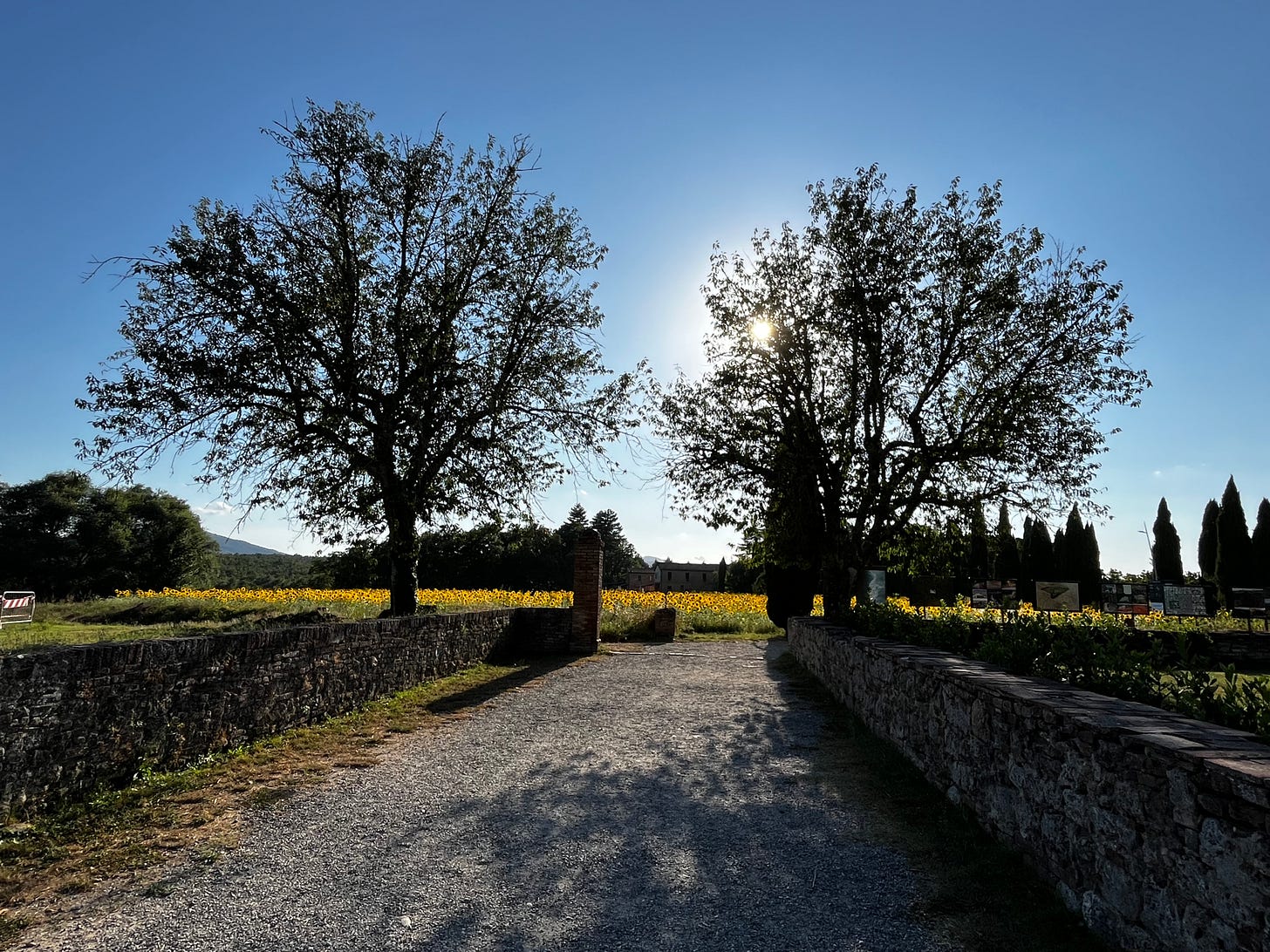



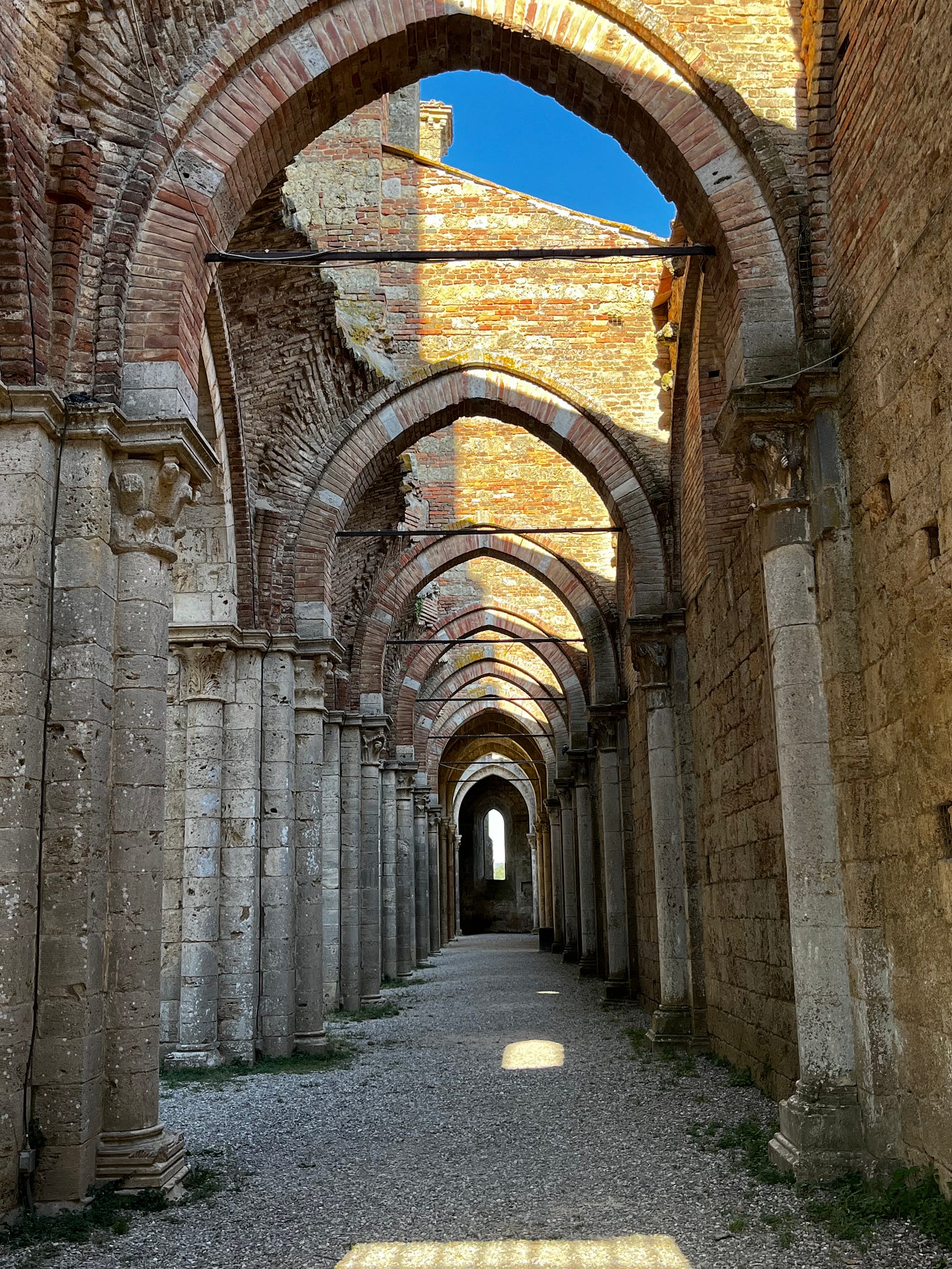
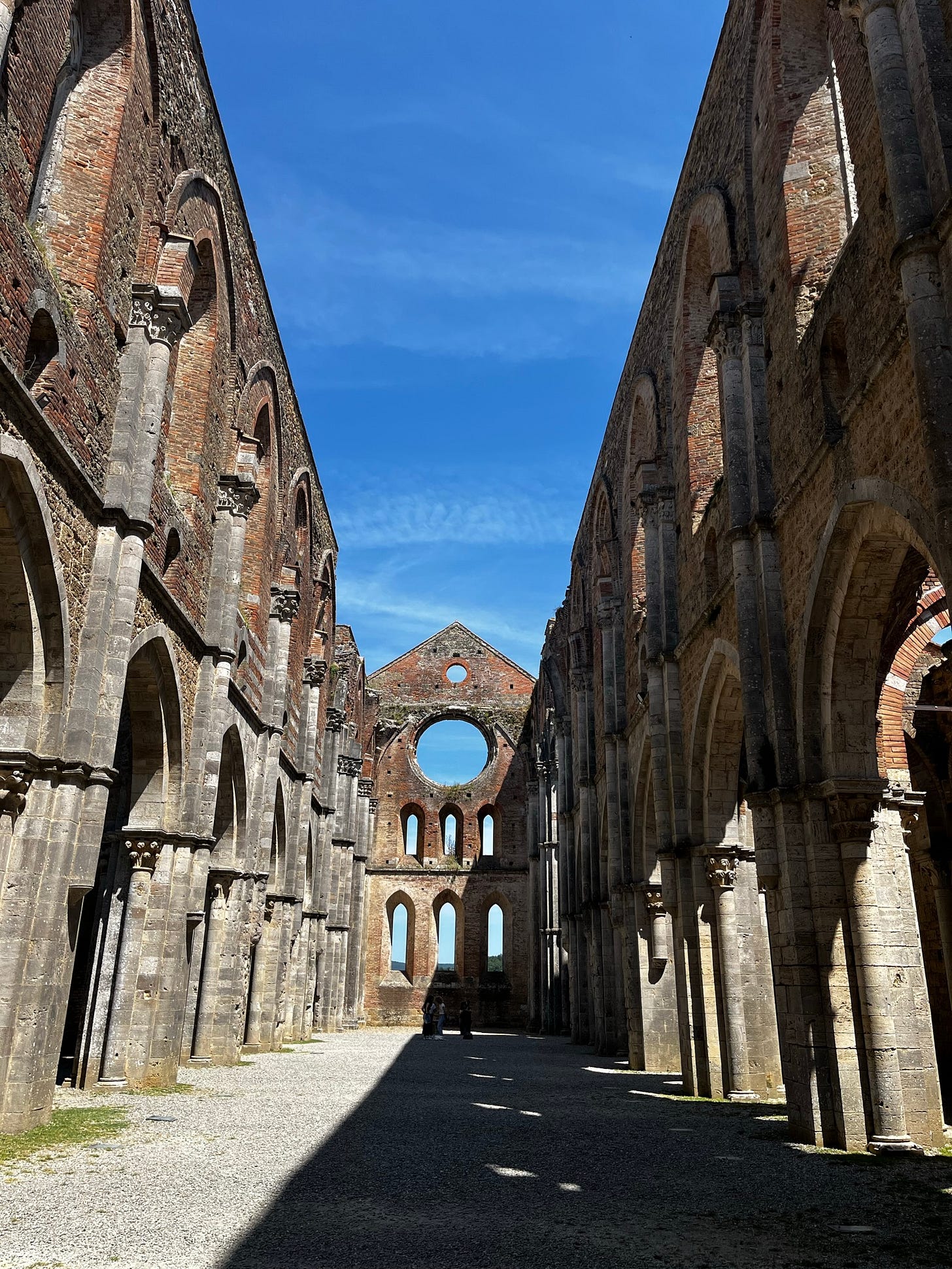



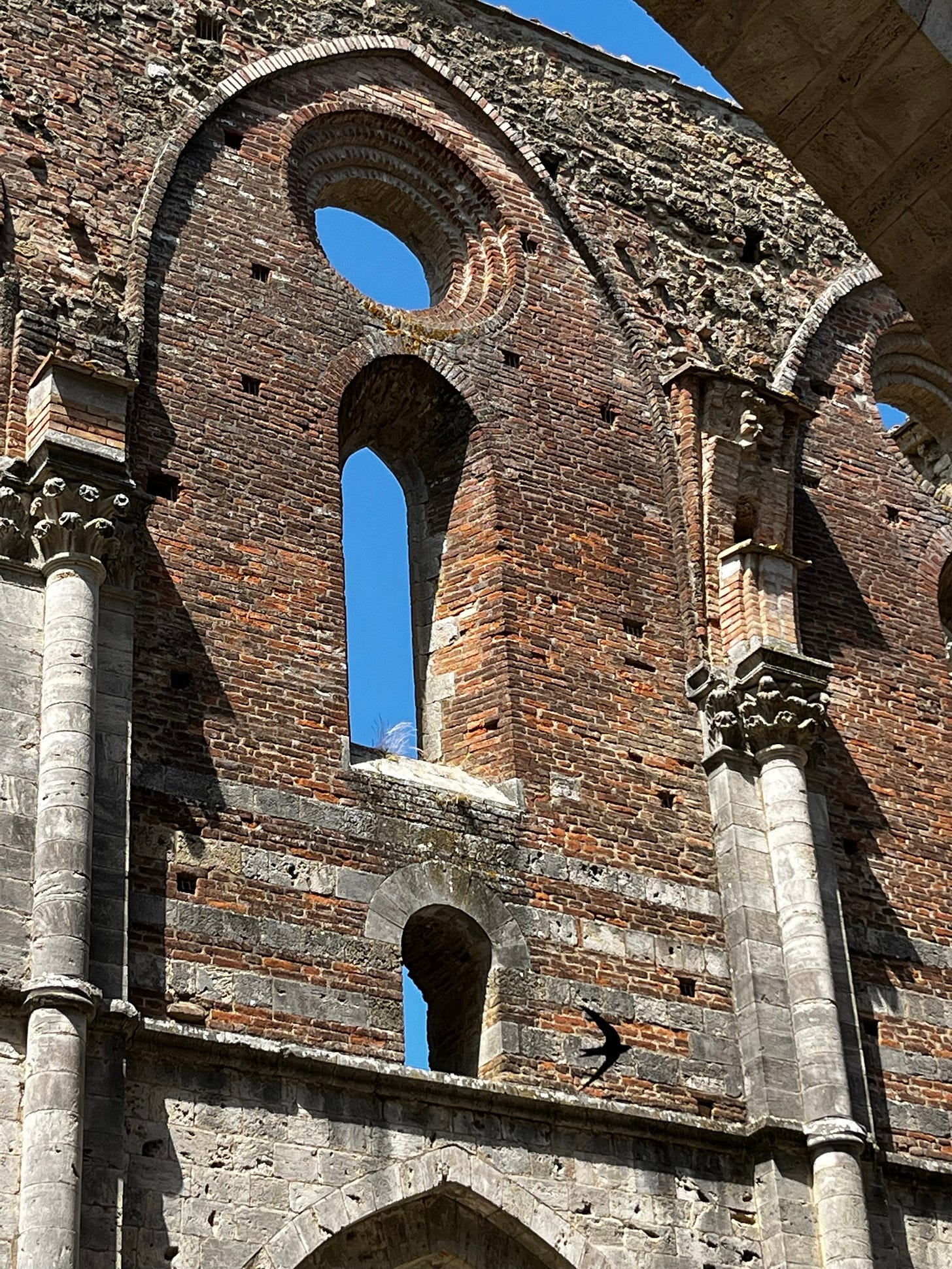

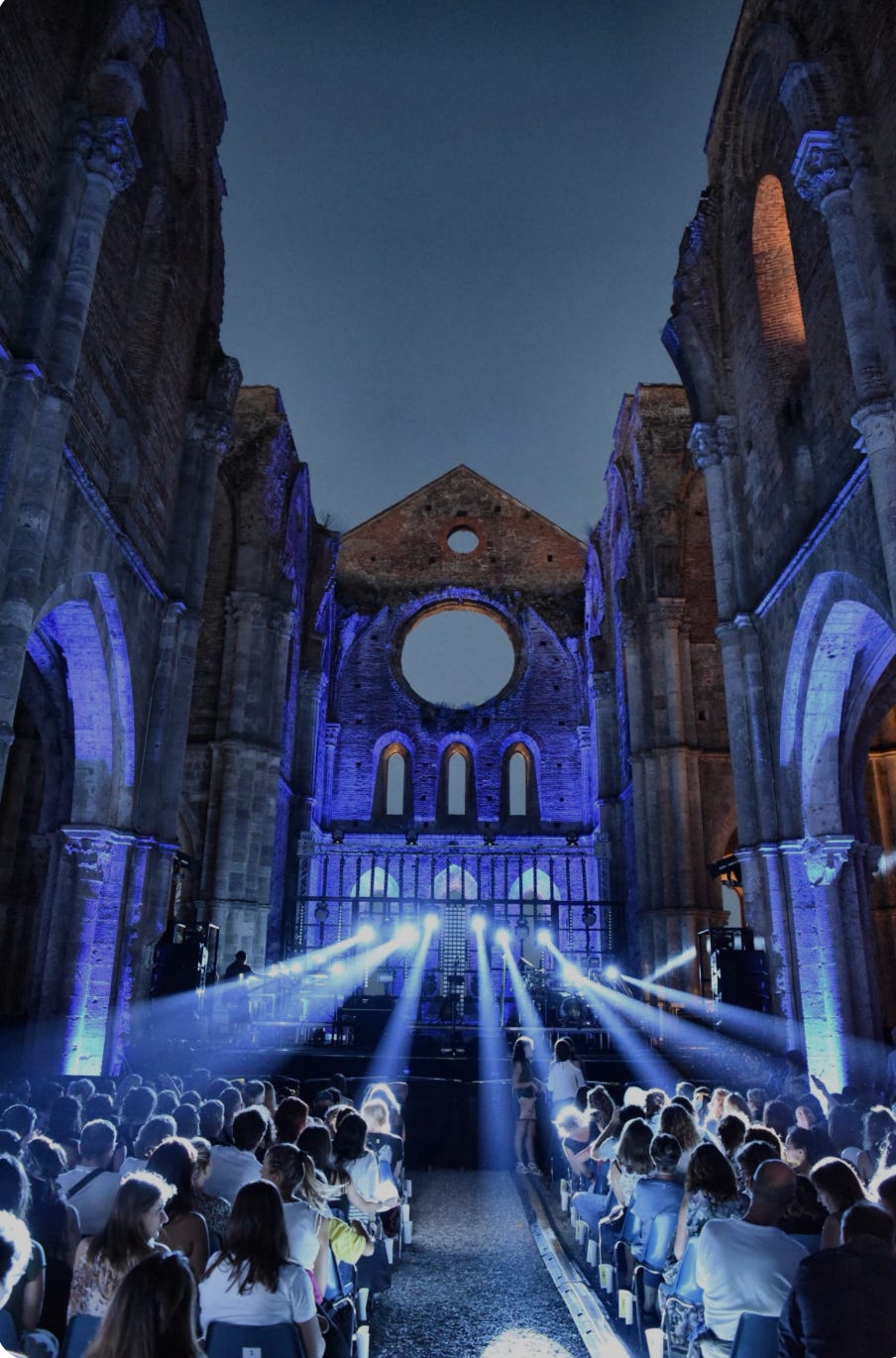

Tu sais Tino, le gouvernement Italien devrait t’engager pour faire la description des endroits à visiter en Italie.
Un autre très beau texte ,
Félicitations
J’adore la dernière photo. Ça te représente bien! Un petit lutin qui se loge au cœur d’un décor architectural pour nous faire découvrir sa splendeur. Encore une fois les photos et ton écriture sont splendides.